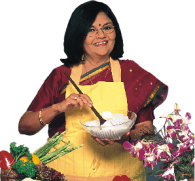Nutritional Facts of namkeen shakarpara recipe | masala namkeen shakarpara Diwali snack | Calories in namkeen shakarpara recipe | masala namkeen shakarpara Diwali snack |
This calorie page has been viewed 25698 times
| Value per cup | % Daily Values | |
| Energy | 654 kcal | 33% |
| Protein | 8.3 g | 14% |
| Carbohydrates | 49.5 g | 18% |
| Fiber | 0.84 g | 3% |
| Fat | 46.62 g | 78% |
| Cholesterol | 2.7 mg | 1% |
| VITAMINS | ||
| Vitamin A | 551.9 mcg | 55% |
| Vitamin B1 (Thiamine) | 0.1 mg | 7% |
| Vitamin B2 (Riboflavin) | 0.1 mg | 4% |
| Vitamin B3 (Niacin) | 1.7 mg | 12% |
| Vitamin C | 2.8 mg | 3% |
| Vitamin E | 0.1 mg | 1% |
| Folic Acid (Vitamin B9) | 6.2 mcg | 2% |
| MINERALS | ||
| Calcium | 81.4 mg | 8% |
| Iron | 2.2 mg | 11% |
| Magnesium | 45.9 mg | 10% |
| Phosphorus | 110.3 mg | 11% |
| Sodium | 12.9 mg | 1% |
| Potassium | 107.2 mg | 3% |
| Zinc | 0.6 mg | 3% |
Percent Daily Values are based on a 2000 calorie diet. Your daily values may be higher or lower depending on your calorie needs.

मकीन शकरपारे रेसिपी की कैलोरी के लिए कैलोरी - हिन्दी में पढ़ें (Calories for Namkeen Shakarpara in Hindi)
નઅમકએએન સહઅકઅરપઅરઅ માં કેટલી કેલરી છે?કેલરી માટે - ગુજરાતી માં વાંચો (Calories for Namkeen Shakarpara in Gujarati)
Click here to view Namkeen Shakarpara
Calories in other related recipes


















